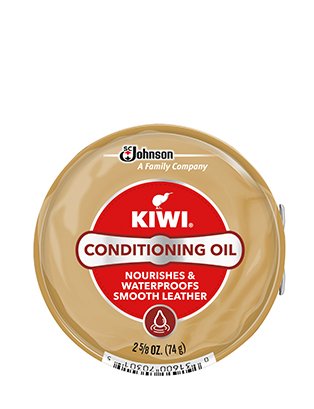Is kiwi conditioning oil the same as mink oil? This is a common question that many people have when it comes to caring for their leather products. While both oils are often used for conditioning and protecting leather, they are not the same. Kiwi conditioning oil and mink oil have different compositions and properties, which can impact their effectiveness on your leather items. In this article, we will explore the differences between these two oils and help you understand which one may be the best choice for your leather care needs. So, if you’ve ever wondered about the distinction between kiwi conditioning oil and mink oil, keep reading to learn more.
Is Kiwi Conditioning Oil the Same as Mink Oil?
Introduction
When it comes to conditioning oils for various purposes, two popular options that often come up in discussions are Kiwi Conditioning Oil and Mink Oil. Both these oils are known for their ability to nourish and protect various materials. However, there might be some confusion regarding their similarities and differences. In this article, we will explore the question – is Kiwi Conditioning Oil the same as Mink Oil? We will delve into their composition, uses, benefits, and potential drawbacks to provide a comprehensive understanding of these conditioning oils.
Composition
Both Kiwi Conditioning Oil and Mink Oil have different compositions, which contribute to their unique properties and benefits.
Kiwi Conditioning Oil
Kiwi Conditioning Oil is primarily composed of a blend of natural oils such as neatsfoot oil, lanolin, and other essential oils. These ingredients work together to moisturize, soften, and nourish various materials, including leather, boots, and other surfaces. The neatsfoot oil helps penetrate deep into the material, restoring its natural oils and preventing it from drying out. Lanolin, on the other hand, acts as a protective barrier, keeping the material supple and resistant to water and stains.
Mink Oil
Mink Oil, as the name suggests, is derived from the fatty layer beneath a mink’s skin. It is a natural byproduct of the fur industry and has been used for centuries to condition and protect leather goods. Mink Oil is rich in long-chain fatty acids, which provide excellent moisturizing properties. It helps rejuvenate and soften leather, reducing the appearance of scratches and preventing cracks. Mink Oil also creates a protective layer on the material, making it water-resistant.
Uses
While both Kiwi Conditioning Oil and Mink Oil serve as conditioning agents, they have different primary uses due to their unique compositions.
Kiwi Conditioning Oil
Kiwi Conditioning Oil is widely used for treating and conditioning leather items. Its nourishing properties make it ideal for rejuvenating and softening leather shoes, boots, jackets, belts, and other accessories. Additionally, Kiwi Conditioning Oil can be used on non-leather materials like vinyl and rubber to provide some level of protection and shine.
Mink Oil
Mink Oil, with its excellent moisturizing and protective properties, is mainly used for conditioning leather products. It is particularly effective at softening and preserving leather boots, saddles, gloves, and other outdoor gear that are exposed to harsh weather conditions. Mink Oil’s water-resistant properties also make it suitable for protecting leather items from moisture and stains.
Benefits and Drawbacks
Benefits of Kiwi Conditioning Oil
– Deeply moisturizes leather, restoring its natural oils
– Softens and rejuvenates worn-out leather, making it supple and flexible
– Creates a protective barrier against water and stains
– Enhances the overall appearance of leather items, giving them a polished look
– Can be used on various leather products and non-leather materials like vinyl and rubber
Drawbacks of Kiwi Conditioning Oil
– May darken the color of certain types of leather
– Can leave a slightly greasy residue if not properly absorbed
– Some individuals might find the scent overpowering
Benefits of Mink Oil
– Moisturizes and softens leather, reducing the appearance of scratches and cracks
– Creates a water-resistant barrier, protecting leather from moisture and stains
– Enhances the natural shine and luster of leather
– Suitable for outdoor gear exposed to harsh weather conditions
– Can be used on different types of leather products
Drawbacks of Mink Oil
– May darken or alter the color of lighter leather
– The application process can be time-consuming
– Some people may find the scent unpleasant
Compatibility with Different Materials
Compatibility of Kiwi Conditioning Oil
– Leather: Kiwi Conditioning Oil is specifically designed to condition and protect leather materials. It is compatible with most types of leather, including smooth leather, suede, and nubuck.
– Non-Leather Materials: While Kiwi Conditioning Oil is primarily intended for leather, it can also be used on certain non-leather materials like vinyl and rubber to provide some level of conditioning and shine.
Compatibility of Mink Oil
– Leather: Mink Oil is suitable for various types of leather, including smooth leather, distressed leather, and oil-tanned leather. However, it may not be ideal for lighter-colored leather due to potential darkening.
– Other Materials: Mink Oil is not recommended for use on non-leather materials as it may cause discoloration or damage.
Application Techniques
Application of Kiwi Conditioning Oil
– Clean the leather item: Ensure that the leather surface is free from dirt, dust, and stains before applying the conditioning oil.
– Apply the oil: Use a soft cloth or sponge to apply a small amount of Kiwi Conditioning Oil onto the leather. Gently rub the oil in a circular motion, ensuring even coverage.
– Allow absorption: Let the oil absorb into the leather for a few minutes, and then wipe off any excess oil using a clean cloth.
– Buff and shine: Once the oil is absorbed, buff the leather surface with a soft cloth to achieve a polished finish.
Application of Mink Oil
– Clean the leather item: Ensure that the leather surface is clean and free from any dirt or debris.
– Apply the oil: Use a soft cloth or sponge to apply a thin, even layer of Mink Oil onto the leather. Pay attention to any cracks or dry areas.
– Allow absorption: Let the oil sit on the leather for a few hours or overnight, allowing it to penetrate and moisturize the material thoroughly.
– Remove excess oil: After the absorption period, use a clean cloth to wipe off any excess oil from the leather surface.
– Buff and shine: Using a soft cloth, gently buff the leather to bring out its natural shine.
In conclusion, while both Kiwi Conditioning Oil and Mink Oil are conditioning oils with similar purposes, they differ in composition, uses, and compatibility with different materials. Kiwi Conditioning Oil is primarily used for conditioning leather items and non-leather materials, offering deep moisturization and protection. On the other hand, Mink Oil is specifically designed for leather, providing excellent moisturizing and water-resistant properties. Understanding their unique qualities can help you make an informed decision based on your specific needs and the material you wish to condition.
Remember to follow the recommended application techniques for each oil to ensure optimum results and longevity of your leather items. Whether it’s Kiwi Conditioning Oil or Mink Oil, regular conditioning can help preserve the beauty and extend the lifespan of your cherished leather goods.
KIWI Shoe Polish Conditioning Oil Review
Frequently Asked Questions
Is Kiwi Conditioning Oil the same as Mink Oil?
No, Kiwi Conditioning Oil is not the same as Mink Oil. While both products are used for conditioning and protecting leather, they are derived from different sources and have different properties. Kiwi Conditioning Oil is typically made from a blend of natural oils, including neatsfoot oil, which helps to soften and condition leather. On the other hand, Mink Oil is derived from the fat of minks and is known for its waterproofing properties. It is commonly used to treat leather shoes and boots. It’s important to choose the right product based on your specific leather care needs.
Can Kiwi Conditioning Oil be used as a substitute for Mink Oil?
While Kiwi Conditioning Oil can be used to condition and soften leather, it may not provide the same level of waterproofing and protection as Mink Oil. Mink Oil has unique properties that make it effective in repelling moisture and keeping leather items, such as shoes and bags, in good condition. If you specifically require waterproofing, it is recommended to use Mink Oil or a product that is specifically designed for that purpose.
What are the benefits of using Kiwi Conditioning Oil?
Kiwi Conditioning Oil offers several benefits for leather care. It helps to moisturize and soften leather, preventing it from drying out and becoming brittle. The oil also restores the natural shine and luster of leather, making it look more attractive. Regular use of Kiwi Conditioning Oil can extend the lifespan of leather products and keep them looking their best.
What are the benefits of using Mink Oil?
Mink Oil is widely known for its waterproofing capabilities. It creates a protective barrier on leather, preventing water and moisture from seeping in. This helps to prevent water damage, staining, and mold growth. Additionally, Mink Oil conditions and softens the leather, keeping it supple and enhancing its durability. It is a popular choice for treating leather footwear, such as boots, to keep them in excellent condition.
Can Kiwi Conditioning Oil and Mink Oil be used together?
Yes, Kiwi Conditioning Oil and Mink Oil can be used together in a leather care routine. You can apply Kiwi Conditioning Oil first to moisturize and soften the leather, and then follow it up with Mink Oil to provide additional waterproofing and protection. This combination can help maintain the leather’s appearance and prolong its lifespan by addressing both conditioning and waterproofing needs.
Are there any precautions to consider when using Kiwi Conditioning Oil or Mink Oil?
When using Kiwi Conditioning Oil or Mink Oil, it is important to carefully follow the product instructions. Apply a small amount of the oil onto a clean cloth and then gently rub it onto the leather in circular motions. Allow the oil to absorb into the leather before using or storing the item. It’s recommended to test the oil on a small, inconspicuous area of the leather first to ensure compatibility and avoid any potential discoloration or damage.
Final Thoughts
In conclusion, after analyzing the properties and benefits of both Kiwi conditioning oil and mink oil, it is evident that they are not the same. Despite both being popular for leather care, Kiwi conditioning oil offers a unique blend of ingredients that nourish and protect leather, while mink oil primarily focuses on softening and waterproofing. Therefore, it is crucial for consumers to understand the specific qualities they are seeking in a conditioning oil and make an informed decision based on their individual needs. Ultimately, whether it is Kiwi conditioning oil or mink oil, taking proper care of leather goods is essential for maintaining their longevity and appearance.






